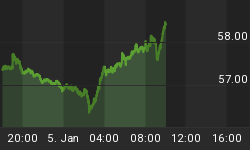This week rather than the usual Wednesday roundup of bad news about the economy, we'll give you some even worse information about the stocks market's current valuation level. As we recently prepared our testimony for a congressional committee, we tried to answer a simple question.
"How overvalued are stocks?"
There is no easy answer to this question. So many companies today have either operating losses and/or frequently recurring "non-recurring" charges that the price-earnings ratio, especially in regards to the Nasdaq or Nasdaq 100, is virtually meaningless.
Despite this difficulty, we often hear the argument that, "Sure the big NASDAQ stocks are overvalued, but lots of the smaller companies are pretty cheap now that the index is 60% of its highs."
To see how many bargain stocks are out there we warmed up our friendly Compustat data retriever and plunged in. We posed the following question:
How many of the largest US industrial companies have that unusual combination of
- reasonable valuation
- reasonable operating results
- a fairly clean balance sheet
We started by throwing out all the financial, real estate, utilities, and natural resource companies whose unusual valuation characteristics skew the results. Our look at the 2,000 largest industrial companies took us from GE and Microsoft all the way down to companies with market caps of about $200 million. To some, $200 million is a micro-cap, but many of these companies are substantial and important. Just ask the lenders of Sunbeam.
Reasonable Valuation
Just to show how "New Era" we have become, we decided to call a "reasonable valuation" anything less than 3x sales. We can imagine many stocks that are dramatically overvalued at 3x sales, but we adopted a liberal definition of "reasonably valued" for this exercise.
As it turns out, of the 2,000 companies under review, more than 700 still sell for more than 3x sales. Stop and ponder this for a moment. Even after a 60% decline is NASDAQ, 1/3 of all the companies in our universe remain quite pricey.
We would expect such heady valuations to reflect superior operating performance. Yet, less than 1/3 of those companies produced sales growth of more than 15% for their most recent quarter. The median growth rate was 4%, and more than one-third of companies reported declining sales. Are these growth stocks, or cyclicals?
Reasonable Operating Results
We next asked Compustat to screen the 1,297 remaining "low" price to sales companies for those earning at least a paltry 10% on equity. After ten years of the strongest corporate profitability on record, a 10% ROE is hardly a high hurdle. Yet only 741 (57%) of the remaining companies produced an ROE of above 10% for the last 12 months. Admittedly the unprofitable companies do include those that took "one-time" charges. But we have grown increasingly uncomfortable with dismissing these charges as one-time events. Such charges occur almost every year for many companies. Certainly more companies would pass our test if we excluded these write-offs, but imagine how many companies would notearnia 10% ROE if equity had not been whittled down through write-offs and stock buybacks.
A Fairly Clean Balance Sheet
Of the remaining 741 companies, we asked how many had debt equal to less than 40% of capital. Once again only "New Era" thinking can define a balance sheet with 40% debt to capital as acceptable at the end of a 10-year boom, but we once again bow to new ideas.
According to Compustat, of the remaining "reasonably valued" companies with "decent operating results," 371 (50%) had balance sheets that couldn’t pass this limited test.
The Final Results
After starting with 2,000 large industrial companies, we find that only 371 (19%) managed to pass a test of minimal valuation and operating standards. Just for grins consider some standards that old fogies might consider appropriate:
- Less than 1x sales
- ROE over 15%
- Debt/capital less than 25%
These stiffer requirements left us with only 45 companies (2% of our universe of 2,000). And even this list is far from an inspiring. The results include a collection of retailers, distributors, and other low margin businesses that always look attractive on a price/sales valuation basis. There are even a few busted tech companies that we can hardly recommend (Priceline, and even Iomega).
Are there any interesting stocks after all this effort? Take a look and the manufacturing part of the old Teledyne Company, now called Teledyne Technologies (TDY). This is hardly a "buy recommendation," just a reminder that there may be one undervalued stock among the largest 2,000 industrial companies.
CONCLUSION
The stock market remains dramatically overvalued. Few companies, big or small, can be considered reasonable investments in any sense of the word. Looking at the market averages can be deceiving, but digging into individual companies reveals few bargains. We can only conclude that:
- Many stocks remain significantly overvalued
- Many companies have very weak operating results
- Many companies have bad balance sheets.
This is hardly an environment in which new bull markets are born.















